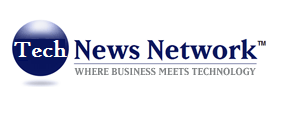
Embracing Cloud-Based Asset Finance Management Software: A Strategic Imperative
In the rapidly evolving landscape of asset leasing and equipment finance, the need for real-time capabilities and advanced technologies has never been more apparent. Today, many core asset leasing systems lack the agility and responsiveness required to meet the dynamic demands of customers. As businesses transition towards more service-oriented models, such as equipment-as-a-service, the role of cloud-based asset finance management software becomes increasingly crucial.
The Strategic Challenge of System Upgrades: A Business-Wide Endeavor
Upgrading core asset leasing systems is not a task confined to the IT department; it is a strategic challenge that necessitates the involvement of the entire business management. Over time, many asset leasing companies have found themselves grappling with systems that are either outsourced or pieced together from disparate solutions. This fragmented landscape poses a significant obstacle to fully understanding and maintaining existing products, leading to high costs and heavy reliance on third-party providers.
The complexity of these systems often results in a lack of transparency, making it challenging for business leaders to grasp the intricacies of their operations fully. This lack of understanding can hinder decision-making and inhibit the ability to innovate. Moreover, the reliance on third-party providers for system maintenance and updates adds another layer of dependency and potential vulnerabilities.
As asset leasing companies strive to navigate the ever-evolving landscape of the industry, the need for a comprehensive and integrated system becomes increasingly apparent. A strategic approach to system upgrades involves not only technical considerations but also a thorough understanding of the business’s objectives, processes, and customer needs. This holistic perspective ensures that the upgraded system aligns with the organization’s strategic goals and enhances overall operational efficiency.
Balancing Short-Term Costs with Long-Term Benefits
In today’s fiercely competitive environment, the role of technology in asset finance and leasing organizations cannot be overstated. Investing in modern technologies is not merely an option; it has become a strategic imperative for staying ahead in the market. However, executives face the challenge of balancing near-term expenses with long-term requirements to maintain competitiveness.
The impending recession has heightened the urgency of making strategic investments that can deliver both immediate and long-lasting benefits. While the allure of cutting-edge technologies is undeniable, asset leasing executives must carefully evaluate the return on investment and prioritize initiatives that offer tangible value. This includes considering factors such as improved operational efficiency, enhanced customer experience, and the ability to adapt to evolving market trends.
Strategic technology investments can yield significant benefits for asset leasing companies. For instance, automation can streamline manual processes, reducing costs and improving accuracy. Advanced analytics tools can provide valuable insights into customer behavior and market trends, enabling more informed decision-making. Moreover, investing in cloud-based solutions can offer scalability and flexibility, essential factors in today’s rapidly changing business landscape.
The Urgency of Legacy Restructuring: Embracing the Future of Asset Leasing
Asset leasing leaders are facing a pivotal moment as they recognize the urgent need to replace legacy systems and modernize operations. The post-pandemic world has accelerated the demand for digitization, automation, and upgrades across industries, including asset finance and leasing. This imperative for change is not merely about keeping up with trends; it is about ensuring the future commercial viability of asset leasing companies.
Legacy systems, while once reliable, now pose significant limitations and risks. These systems may lack the agility and flexibility required to adapt to changing market conditions and customer demands. Moreover, the costs associated with maintaining and supporting legacy systems can be prohibitive, draining valuable resources that could be allocated to innovation and growth.
By embracing modern technologies and restructuring legacy systems, asset leasing companies can position themselves for success in the digital era. Cloud-based solutions offer a path forward, providing scalability, agility, and cost-effectiveness. These solutions empower asset leasing organizations to streamline operations, enhance customer experiences, and drive business growth.
The Role of Cloud-based Solutions
Cloud-based asset leasing software offers a transformative solution for companies seeking operational efficiency and agility. By leveraging cloud technologies, companies can eliminate the need for costly infrastructure investments and achieve plug-and-play capabilities.
- Streamlining business processes: Cloud-based platforms allow asset finance companies to streamline core business processes, addressing challenges around agility, scalability, and cost-effectiveness. With a cloud-based approach, companies can build a new data strategy and define a data model across the entire asset leasing process.
- Incremental innovation: A strategic approach to cloud adoption involves incremental innovation, allowing companies to enhance existing capabilities with disruptive technologies such as AI and machine learning. These technologies offer innovative approaches to data analysis and provide valuable insights for business growth.
- Addressing security concerns: While the benefits of cloud-based solutions are significant, security remains a top priority for asset finance companies. Cloud solution providers must offer transparency regarding data storage, access protocols, and disaster recovery measures.
- Choosing the right partner: Selecting a cloud partner with robust security measures is crucial. Odessa, for instance, enforces global standard data controls and maintains ISO/IEC 27001:2015 accreditation for cloud security. This certification provides business confidence and ensures that security is integrated into the core of the technology.
- Crafting a strategic roadmap: Asset leasing companies should approach cloud adoption with a strategic roadmap, identifying objectives and prioritizing initial investments. A hybrid approach, combining existing systems with cloud-based solutions, can help shift burdens from core systems gradually.
Odessa’s Cloud-native Solution
Odessa offers a cloud-native, fully managed software-as-a-service (SaaS) solution designed specifically for asset finance organizations. Unlike traditional solutions retrofitted for the cloud, Odessa’s platform is built from the ground up for cloud computing. This approach ensures optimal agility, automation, and scalability, allowing companies to stay ahead in a rapidly evolving industry.
A Future-ready Investment
In conclusion, cloud-based asset finance management software is not just a technological upgrade; it is a strategic imperative for asset leasing companies. By embracing cloud technologies, companies can achieve operational efficiency, scalability, and agility while mitigating security risks. Odessa’s cloud-native solution offers a future-ready investment for asset finance organizations seeking to thrive in the digital era.


